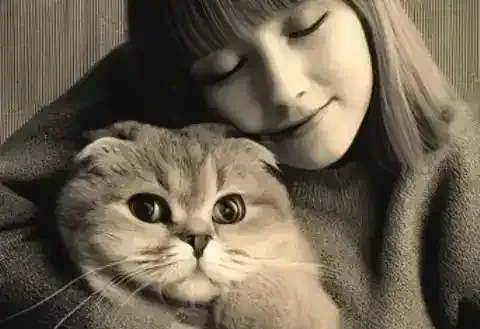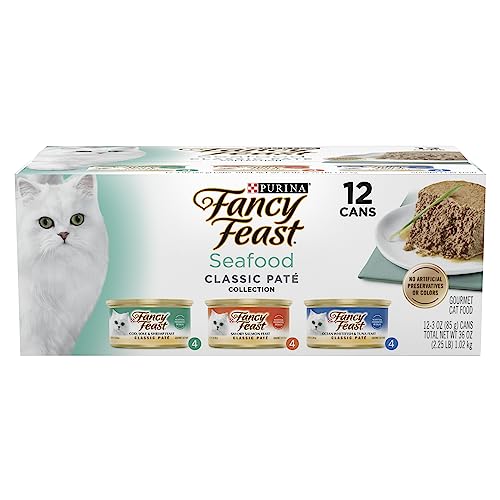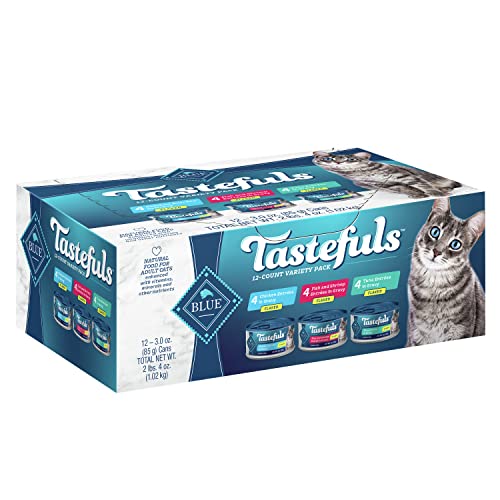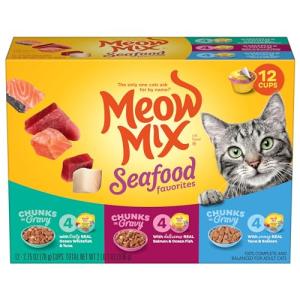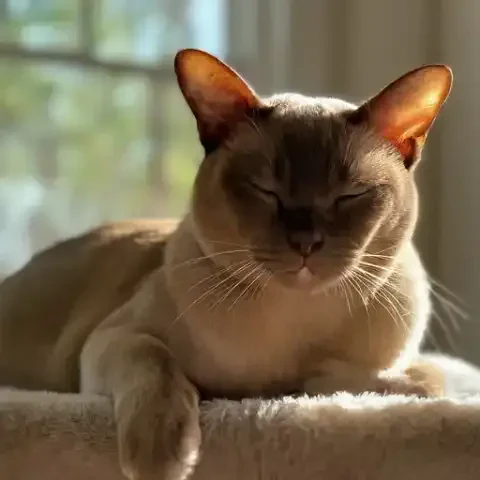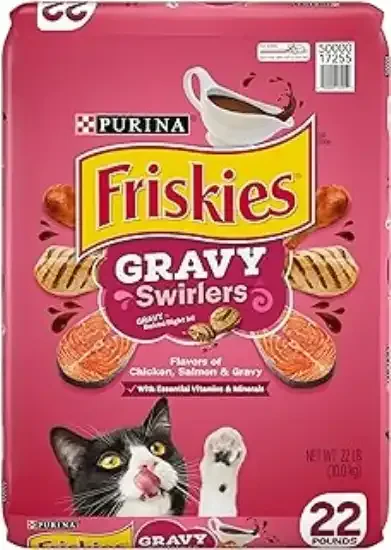"Diabetes? In my cat?" The words can feel like a punch to the gut, a wave of worry washing over you as you try to process the vet's diagnosis. It's understandable to feel overwhelmed, perhaps even scared. Diabetes, after all, sounds serious, complex, and…well, human. But take a deep breath. While a diabetes diagnosis for your feline companion is undoubtedly a significant life change, it is absolutely not a sentence of doom and gloom. In fact, with understanding, dedication, and the right management plan, cats with diabetes can live long, happy, and fulfilling lives by your side. This isn’t the end of the world for your furry friend; it’s the beginning of a new chapter in your caregiving journey, a chapter where you become an even more vital partner in their health and well-being.
This article is designed to be your reassuring guide, your source of clear and actionable information as you navigate this new terrain. We’re here to empower you, to equip you with the knowledge and tools you need to become a confident and capable caregiver for your diabetic cat. Forget feeling lost and overwhelmed. Instead, let’s embark on this journey together, arming ourselves with understanding and a proactive approach. We'll demystify feline diabetes, break down the management strategies into manageable steps, discuss home monitoring techniques, and address potential complications so you can be prepared and proactive. More than just medical information, we'll explore how to seamlessly integrate diabetes care into your daily routine, maintain that precious bond with your cat, and ultimately, ensure they live a life filled with comfort, joy, and purrs, despite their diagnosis. This isn’t just about managing a disease; it’s about celebrating and cherishing your feline companion and ensuring their life remains vibrant and full of love.
Let's start with the basics. What exactly is diabetes in cats? Imagine insulin as a tiny, but incredibly important key. This key unlocks the doors to your cat's cells, allowing glucose – which is essentially sugar from their food – to enter and be used as energy. Glucose is the fuel that powers everything your cat does: from chasing laser pointers to purring contentedly in their sleep. Now, in a cat with diabetes, this key isn't working properly. There are two main ways this can happen. In a less common form, called Type 1 diabetes, your cat's body simply doesn't produce enough insulin. Think of it like running out of keys altogether. However, in cats, the much more typical scenario is Type 2 diabetes. In this case, the body is producing insulin, but the cells have become resistant to it. It’s like having the keys, but the locks are jammed and they no longer work effectively. And just like in humans, Type 2 diabetes in cats is strongly linked to obesity. Excess body fat can actually interfere with insulin's ability to do its job, making cells less responsive.
Regardless of whether it's a key shortage or jammed locks, the end result is the same: glucose, the vital energy source, can't get into the cells where it's needed. Instead, it builds up in the bloodstream, leading to chronically high blood sugar levels – a condition known as hyperglycemia. This high blood sugar is the root cause of all the problems associated with diabetes. But why do cats develop this metabolic hiccup in the first place? While the exact reasons are complex and not fully understood, we do know some key risk factors. Obesity is, without a doubt, the biggest culprit. Overweight cats are significantly more likely to develop insulin resistance and Type 2 diabetes. Age is another factor; diabetes is more common in middle-aged to older cats, typically those over the age of seven. Breed predisposition plays a minor role, with some breeds like Burmese cats showing a slightly higher risk, though diabetes can occur in any breed. Certain medications, particularly steroids, can sometimes contribute to the development of diabetes in cats, although this is less common. The key takeaway here is this: feline diabetes is not some mysterious, incurable ailment. It's a manageable metabolic disorder that arises when the body's insulin system malfunctions, leading to high blood sugar. Understanding this basic mechanism is the first step in taking control and providing the best possible care for your diabetic feline friend.
So, your cat has been diagnosed with diabetes. What now? The good news is, there is a clear and effective action plan for managing this condition, and it revolves around three core components: veterinary-prescribed insulin, dietary management, and regular veterinary monitoring. Let's start with insulin, often the cornerstone of diabetes management in cats. For most diabetic cats, especially those with Type 2 diabetes which is the most common form, insulin injections become a necessary part of daily life. Insulin injections essentially replace or supplement the insulin your cat's body isn't producing effectively, or isn't responding to properly. Your veterinarian will prescribe a specific type of insulin and dosage tailored to your cat's individual needs. There are various types of insulin available, ranging from long-acting to intermediate-acting, and your vet will determine which is most appropriate based on your cat’s specific type of diabetes and blood sugar levels. The thought of giving your cat injections at home can understandably feel daunting, even terrifying. But take heart! Millions of cat owners successfully administer insulin injections to their diabetic cats every day, and you absolutely can too. It’s much easier than you might imagine, and we'll provide a detailed step-by-step guide to help you master this skill with confidence and gentleness.
Dietary management is the second crucial pillar of diabetes care, and in some cases, particularly with early-stage Type 2 diabetes, dietary changes alone can sometimes be enough to manage the condition, although insulin is frequently required long-term. Therapeutic diabetic cat food, often prescription diets available from your veterinarian, plays a vital role. These diets are specifically formulated to be high in protein and low in carbohydrates, which helps to better regulate blood sugar levels in diabetic cats. Wet food is generally preferred over dry food for diabetic cats because it tends to be lower in carbohydrates and higher in moisture, promoting hydration which is also important for diabetic cats. Consistency in meal schedule is also key. Feeding your cat at consistent times each day, often in coordination with their insulin injections, helps to maintain stable blood sugar levels throughout the day. Portion control is absolutely critical. Preventing obesity or managing weight is paramount for diabetic cats, as excess weight exacerbates insulin resistance. Work closely with your veterinarian to determine the appropriate daily calorie intake and portion sizes for your cat to maintain a healthy weight. Treats need to be carefully considered too. While you still want to reward your feline friend, choose diabetic-friendly treats specifically formulated for diabetic cats, or opt for very small portions of lean protein like cooked chicken or fish. In some cases, if weight management is a major priority, your vet may recommend minimizing or even eliminating treats altogether.
Finally, regular veterinary check-ups and monitoring are essential for the ongoing management of feline diabetes. Follow-up vet visits are crucial for monitoring your cat's blood glucose levels, assessing their overall health, and adjusting their insulin dosage as needed. Initially, your veterinarian may recommend blood glucose curves, which involve taking multiple blood glucose readings over a period of several hours in the veterinary clinic to assess how your cat's blood sugar levels are responding to insulin throughout the day. Another important blood test is the fructosamine test, which provides a longer-term picture of blood sugar control over the past few weeks, helping to assess overall diabetes management. These regular veterinary check-ups and monitoring tools are vital for ensuring your cat’s diabetes is well-controlled and to make necessary adjustments to their treatment plan as their needs evolve over time.
Let's delve into the practicalities of giving insulin injections at home – a skill that might seem daunting, but with a little practice and the right guidance, you’ll become a pro in no time, and more importantly, your cat will benefit immensely. First, gather your supplies: you'll need the vial of insulin prescribed by your veterinarian, the correct type and gauge of insulin syringes (always use U-100 syringes for U-100 insulin – this is crucial for accurate dosing!), alcohol swabs (these are optional, as cleaning the injection site isn't always necessary in cats, but some owners prefer them), a sharps container for safe disposal of used syringes, and some of your cat’s favorite treats for positive reinforcement afterwards. Preparing the insulin is the next step. Always double-check the insulin vial to ensure you have the correct type and that it hasn’t expired. If your veterinarian instructs you to do so (this depends on the type of insulin), gently roll the insulin vial between your palms to mix it – never shake insulin, as shaking can damage the medication. Carefully draw up the correct dose of insulin into the syringe, ensuring precise measurement is key for effective diabetes management.
Choosing the injection site is also important. The scruff of the neck is the traditional and often easiest site to access, but it's not always the best in terms of insulin absorption, and cats can sometimes become desensitized to injections in this area. Rotating injection sites is generally recommended for better insulin absorption and to prevent skin irritation at any one site. Good alternative injection sites include the sides of the chest, the flank (the area along the side of the body between the ribs and hip), and the thighs. Familiarize yourself with these locations on your cat. Now for the injection technique itself. Gently pinch a tent of skin at your chosen injection site, creating a loose fold of skin between your fingers. Holding the syringe like a pen, insert the needle quickly and decisively at an angle into the base of the skin tent – not straight down, and not parallel to the skin, but somewhere in between. Once the needle is in, push the plunger smoothly and steadily to inject the insulin. Withdraw the needle quickly and gently, and release the skin fold. Immediately after the injection, shower your cat with praise and offer a tasty treat! Positive reinforcement creates a positive association with the injection process, making future administrations much easier for both of you. Safety and hygiene are paramount. Always dispose of used syringes immediately in a sharps container – never throw them in the regular trash. Never reuse syringes – insulin syringes are designed for single use only. Store your insulin vial properly in the refrigerator, following your veterinarian’s instructions. Finally, know what to do if you miss the injection site or only partially inject a dose. If you are unsure if the full dose was administered, or if your cat moves and you’re concerned about needle stick injury, it’s best to err on the side of caution and not re-dose. Contact your veterinarian for guidance if you consistently encounter issues or are unsure about dosing.
Home monitoring of your cat's blood glucose levels can be an incredibly empowering tool for managing their diabetes effectively. Home monitoring offers numerous benefits. It allows for better day-to-day blood sugar control, helping you and your veterinarian fine-tune insulin dosages for optimal regulation. It enables you to detect episodes of hypoglycemia (low blood sugar) or hyperglycemia (high blood sugar) early on, allowing for prompt intervention. And, in the long run, home monitoring can often reduce the frequency of stressful vet visits for blood glucose curves. There are a few methods for home monitoring. Urine glucose testing, using urine glucose test strips, is a less precise and generally not recommended method for cats. Urine strips only detect glucose spillage into the urine, which occurs only when blood sugar levels are already very high, and doesn't provide accurate readings of current blood glucose levels. The gold standard for home monitoring is using a blood glucose meter, or glucometer, specifically calibrated for pets (though human glucometers can be used with veterinary guidance). For an even more advanced and less stressful option, particularly for cats who are very sensitive to blood draws, flash glucose monitoring, or continuous glucose monitors (CGMs), are becoming increasingly available in veterinary medicine. CGMs involve a small sensor inserted just under the skin that continuously measures glucose levels and transmits readings to a handheld reader or smartphone app, providing a wealth of data without repeated needle pricks. If a CGM is something you are interested in, discuss it with your veterinarian to see if it's a suitable option for your cat.
For most cat owners, home blood glucose monitoring using a glucometer is the most practical and accessible method. Let’s walk through the steps. Gather your supplies: your glucometer, a lancet device, lancets (these are tiny needles for pricking the skin), test strips specific to your glucometer, cotton balls, optional alcohol swabs, and, of course, treats! The ear pinna (the outer flap of the ear) is often the preferred testing site in cats, as it is generally less sensitive than paw pads. Before pricking, gently warm the ear by rubbing it to increase blood flow. Using the lancet device, make a quick and shallow prick on the edge of the ear pinna, avoiding major blood vessels. Gently massage the ear to encourage a small droplet of blood to form. Apply the blood droplet to the test strip as directed by your glucometer’s instructions, and wait for the meter to display the reading. Immediately after, shower your cat with praise and offer a treat! Positive reinforcement is key to making blood glucose testing a less stressful experience. Keep a record of your blood glucose readings in a logbook or using a smartphone app designed for pet diabetes monitoring. This log will be invaluable for you and your veterinarian to track trends and adjust insulin dosages effectively. Understanding blood glucose readings is crucial. Your veterinarian will provide you with target blood glucose ranges specific to your cat. These ranges are individualized and depend on factors like insulin type and overall health. Generally, you’ll be looking for readings within a certain range before meals and at various times throughout the day. Knowing when to worry based on home monitoring is vital. Your veterinarian will explain what blood glucose readings are considered too high (hyperglycemia) or too low (hypoglycemia) and warrant immediate contact with the veterinary clinic. Generally, readings that are significantly lower than your target range, especially accompanied by symptoms like weakness or lethargy, could indicate hypoglycemia, while consistently high readings outside of the target range, especially with worsening diabetic symptoms, could indicate hyperglycemia. Always err on the side of caution and contact your vet if you are concerned about any blood glucose readings.
While managing diabetes can become a routine, it’s essential to be aware of potential complications so you can recognize them early and seek prompt veterinary care. Hypoglycemia, or low blood sugar, is a potentially life-threatening emergency. It occurs when blood glucose levels drop too low, often due to receiving too much insulin, missing a meal, or engaging in excessive exercise. Early signs of hypoglycemia can be subtle and include weakness, lethargy, and confusion. As hypoglycemia progresses, signs can become more severe, including stumbling, seizures, and even coma. If you suspect your cat is hypoglycemic, act immediately. Rub a small amount of honey or Karo syrup directly onto their gums – this provides a quick source of glucose to raise their blood sugar. Then, contact your veterinarian immediately or take your cat to the nearest emergency veterinary clinic for urgent care. Hyperglycemia, or high blood sugar, while not an immediate emergency like hypoglycemia, poses significant long-term health risks if left unmanaged. It typically occurs when a cat is not receiving enough insulin, is experiencing illness, or is under stress. Signs of hyperglycemia often develop more gradually and include increased thirst and urination, weight loss despite a normal or increased appetite, lethargy, and recurrent infections, particularly urinary tract infections. Untreated hyperglycemia over time can lead to serious long-term complications, including diabetic neuropathy, which can cause hind leg weakness and a characteristic plantigrade stance. Kidney damage is another potential consequence of chronic high blood sugar. And in severe cases, hyperglycemia can lead to diabetic ketoacidosis (DKA), a life-threatening emergency.
Diabetic Ketoacidosis, or DKA, is a serious and life-threatening complication of diabetes that requires immediate veterinary intervention. DKA occurs when the body, starved of glucose for energy due to insulin deficiency, starts breaking down fat for fuel at an accelerated rate. This process produces ketones, which are acidic waste products that build up to dangerous levels in the bloodstream, causing severe illness. Signs of DKA are often dramatic and indicate a severely ill cat. These include vomiting, profound lethargy, a distinctive sweet or fruity smell to their breath, rapid and labored breathing, and in advanced stages, collapse. If you observe any of these signs, it’s imperative to take your cat to the nearest emergency veterinary clinic immediately. DKA is a critical emergency requiring intensive veterinary care. Finally, diabetic cats are more prone to urinary tract infections (UTIs) due to elevated glucose levels in the urine, which can create a favorable environment for bacterial growth. Be vigilant for signs of UTIs, such as straining to urinate, frequent urination, blood in the urine, or urinating outside the litter box, and contact your veterinarian promptly if you suspect a UTI.
Living with a diabetic cat requires adjustments, but it’s absolutely possible to maintain a wonderful and fulfilling life together. Diabetes care will become a part of your daily routine, much like any other aspect of pet ownership, but it doesn’t have to define your relationship or overshadow the joy your cat brings. Be realistic about the time commitment. Administering insulin injections twice daily, adhering to a consistent feeding schedule, and regularly monitoring blood glucose levels do require dedication and time management. However, these tasks will soon become second nature. Surprisingly, the act of pilling or giving injections can even become a bonding ritual with your cat, especially when paired with consistent positive reinforcement. Treats, praise, and gentle affection immediately after medication time can help your cat associate these moments with positive experiences. Adapt playtime and enrichment activities to your cat’s energy levels. While their activity levels might naturally decrease, they still need and enjoy gentle stimulation. Adjust playtime to shorter, less strenuous sessions, focusing on activities they can comfortably enjoy. Plan ahead for travel and pet-sitting. Diabetes management needs to continue even when you are away. Make detailed arrangements with pet-sitters or boarding facilities to ensure your cat receives their insulin injections and meals on schedule. Don't hesitate to seek support. Online communities of cat owners managing diabetes can provide invaluable emotional support, practical tips, and a sense of shared experience. Lean on your veterinary team as well; they are your partners in navigating this journey and are there to answer questions and provide guidance every step of the way.
In conclusion, a diabetes diagnosis for your cat is not the end of the road, but rather a fork in it. It's a new path that requires learning, adaptation, and a dedicated commitment to managing their health. But it’s a path you can absolutely navigate successfully, armed with the knowledge, techniques, and proactive approach we’ve discussed. Embrace this challenge with confidence, knowing that you are capable of providing excellent care for your diabetic cat and ensuring they continue to enjoy a high quality of life. Focus on the positive: you have the power to make a real difference in your cat's health and happiness. Work closely with your veterinarian, embrace the management plan, celebrate every purr and head-bump, and cherish each precious moment you share with your beloved feline companion. The love and bond you share are the strongest medicine of all, and with proactive care and unwavering affection, you and your diabetic cat can look forward to a bright and joyful future together.
